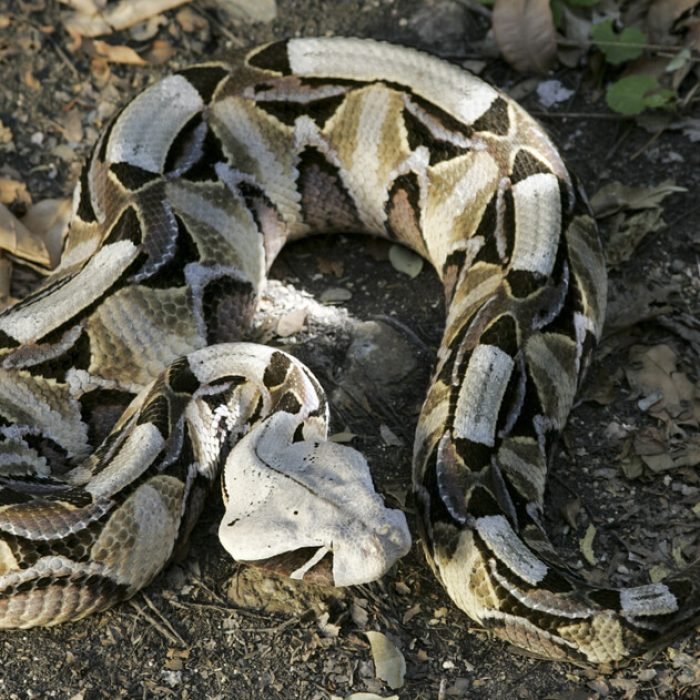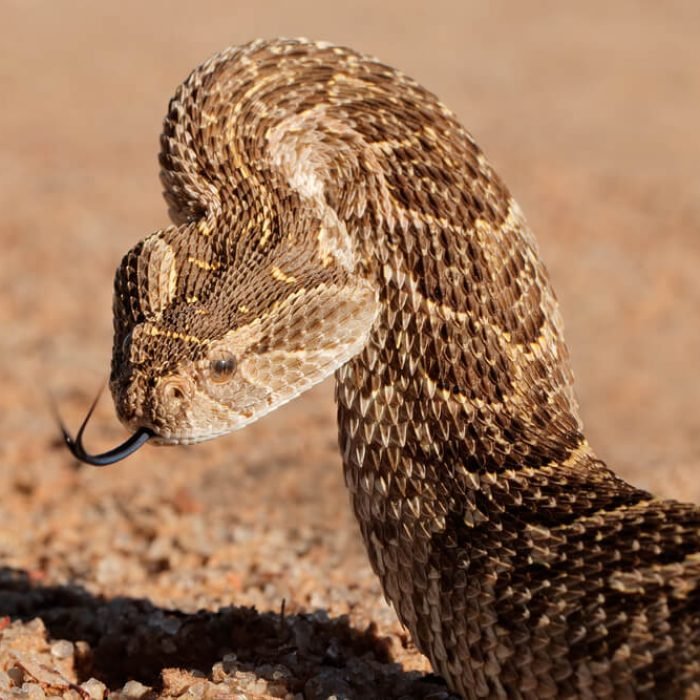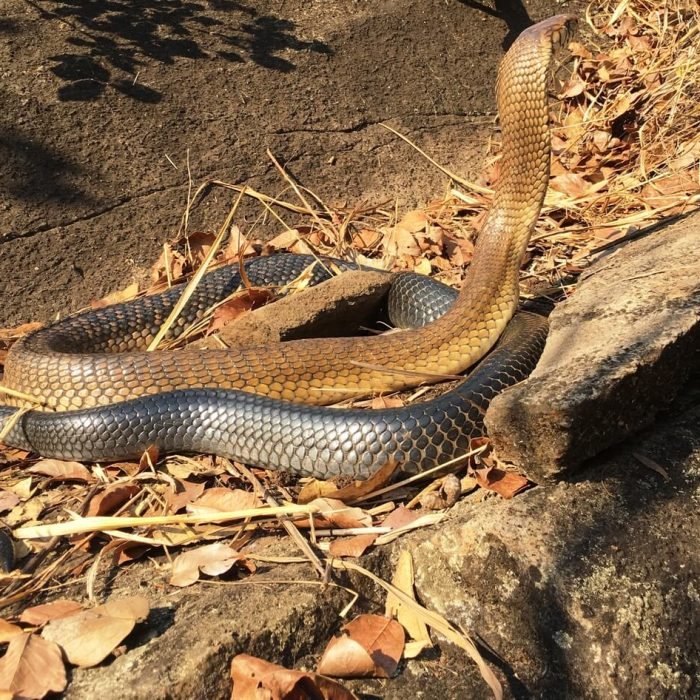Savannah Monitor
( Hopan )
- Varanus exanthematicus
- IUCN Status: Least Concern
- Threat: dangerous
- Venom/Toxin: none
- Trend: unconfirmed

General Information
The savannah monitor is one of three monitor lizards found in Zambia. It is very similar to the white throated monitor but has different characteristic. The savannah monitor is closely related to the mosasaur, a large, extinct sea monster that disappeared 65 million years ago.
Description
Savannah monitors are stoutly built, with relatively short limbs and toes, and skulls and dentition adapted to feed on hard-shelled prey. They are robust creatures, with powerful limbs for digging, powerful jaws and blunt, peglike teeth. The skin coloration pattern varies according to the local habitat substrate. The body scales are large, usually less than 100 scales around midbody, a partly laterally compressed tail with a double dorsal ridge and nostrils equidistant from the eyes and the tip of the snout.
Fun Facts
The savannah monitor is a large and heavy monitor lizard. They can run faster than humans over a short distance. They have a long tail that multitasks as a counterweight when running, an oar to help power it through the water and a whip with which to lash out at an assailant in self-defense.
Ecology & Behaviour
The savannah monitor is a solitary animal. Males are extremely territorial. Upon encountering another male they will first take a threatening posture then begin fighting viciously, often leaving severe bite wounds. Monitors practice ‘open pursuit’ hunting instead of stalking and ambushing. They are very fast despite their massive size because of their powerful leg muscles. Monitors swallow their food whole or in large pieces; they are able to dislocate their thyroid bone in order to enlarge their throat.
Diet
The savannah monitor is a carnivorous animal. Their diet is much more restricted than that of other African monitor lizards, consisting mainly of snails, millipedes, orthopterans, beetles and other invertebrates.
Reproduction
In March – May, a female savannah monitor breaks into a live termite mound to lay 40 or more eggs. The termites repair the damage, leaving the eggs to incubate in warm, humid conditions. They hatch with the following spring rains, when the softened soil allows the hatchlings to break out. When they hatch, baby lizards resemble tiny versions of their parents.
Conservation
It is categorized by the International Union for Conservation of Nature (IUCN) as a, ” Least Concern “
Distribtion & Habitat
The savannah monitor lives in grasslands and savannahs in eastern and southern Africa.
Interaction With Humans
This subspecies a popular pet. The eating of Water Lizard or Water Monitor (Hopan in Silozi is common among some Lozi people of Western province of Zambia. While the eating of water lizard is common in other ethnic groups as well such as the Sengas, Tumbukas and Ngonis, it is more pronounced among the lozi people, especially those found in the rural parts of the country. Savannah monitors are often found in the pet trade despite their highly aggressive demeanor and resistance to taming. They have also been hunted for traditional medicine purposes.
References
Share:
- Phylum: Chordata
- Class: Reptilia
- Order: Squamata
- Family: Varanidae
- Genus: Varanus
- Length: up to 1.8 m
- Weight: up to 70 kg
- Lifespan: 8 – 13 yrs













